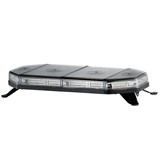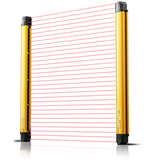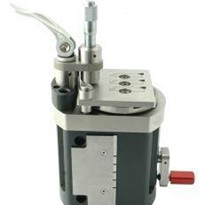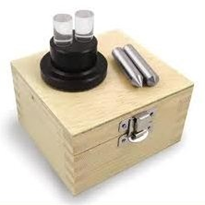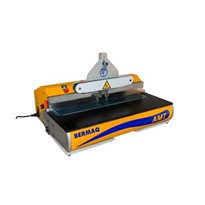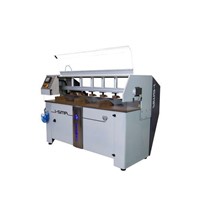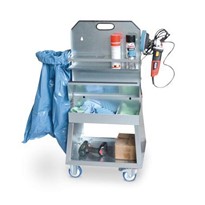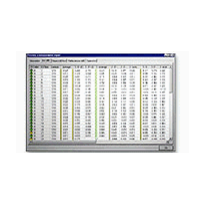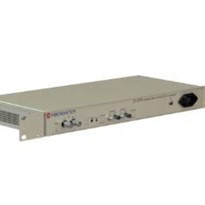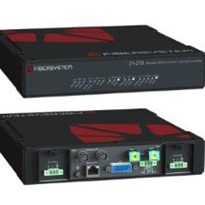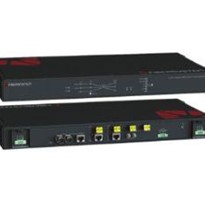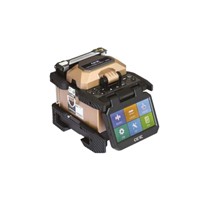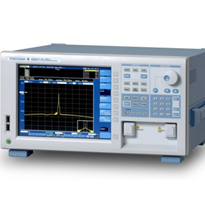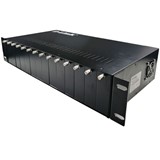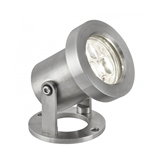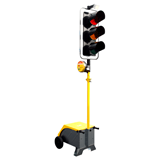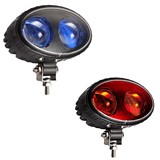While fiber cleavage is very effective on fibers with small diameters such as 125 microns, polishing is essential for almost all glass-based fibers with cladding diameters larger than 200 microns. Furthermore, all fiber connectors require polishing. We will focus our discussion on glass-based fiber polishing in this tutorial since plastic optical fibers (POF) can be cut with special blades at elevated temperatures with satisfactory results.
Fiber ferrules:
The diameter of most optical fibers ranges from 80 um to 1000 um, too small to be polished directly. Ceramic, metal, or glass ferrules are often used to protect the fibers. The most commonly used fiber connectors employ ceramic or metal ferrules. Glass ferrules are preferred when optical coating is necessary after polishing for better adhesion. Due to the significant difference in hardness between the three materials, proper polishing setup is critical for optimum results.
Key polishing ingredients:
Unlike lens polishing, the convex surface of the fiber ferrules are achieved by pressing the ferrules on flexible polising pads. The domed surface is ideal for true physical contact between two singlemode fiber cores. Physical contact is also possible with multimode fibers when the core diameter is small. The dome radius of curvature is determined by the pressing force, the hardness and the thickness of the polishing pad. A true physical contact also requires a slight undercut of the fiber. The amount of undercut is the result of the type of polishing film used, the force applied, and the polish speed. As one can imagine, a consistent high-quality polish can only be achieved with a well designed and precisely tuned polishing machine. Equally important are the proper procedure the operator follows for the process and the type of polishing films used.
Polishing films:
The particle material of the polishing film is the key factor determining the amount of undercut. Diamond, silicon carbide, and aluminum oxide are the three most popular materials used today. A mixture of different film materials may be necessary in one process for the optimum result. One should follow the recommendation of the procedure. De-ionised cooling water is recommended for all polishing films.
Load force:
This is one of the key parameters an operator needs to set before fiber polishing. The load force is determined based on the selection of the type of connectors/ferrules, the number of ferrules, and the diameter of the ferrules. One common mistake is not adjusting the load force when the polishing fixture is not fully loaded. For example, when fully loaded the Princetel PF2500 fixture accommodates 12 connectors. The load force should be reduced to half when only 6 connectors are loaded. It is very important to follow the procedures in the manual. All Princetel's polishing machines have built-in force adjustment mechanisms. For example, the portable FP180e relies on a micrometer for force tuning.
Speed:
Most polishing machines do not offer the flexibility of speed adjustment. This is partially due to the fact that most users only need to handle one type of ferrule material such as zirconia. A slight speed variation does not have significant impact on connector polish result. That is the foundation of Princetel's portable polisher which allows the user to manually crank the lever. However, an versatile polisher should have the capability to change speed according the ferrule and polishing film material. Princetel's modelFP5000 polisher offers essentially continuous speed adjustment from 10-200 rpm.
Polishing time:
It is important not to dwell on any polishing film longer than necessary. Too much polishing can result in undesirable ferrule length, unnecessary polish film wear, and degraded polish finish due to particle accumulation. Make proper adjustments to the recommended polish time in each step in case they are less then ideal.
Inspection and testing:
Fiber connectors are inspected in between each polish step to ensure that the previous step is complete. A stereo or mono microscope with large magnification (60x or larger) is necessary. A mono microscope (180x or larger) with coaxial illumination, camera, and monitor is ideal to reduce worker fatigue. An interferometer can be useful for inspecting and recording the dome radius of curvature and surface quality. However, this type of method requires individual connectors being inserted into the instrument making it less practical for production. Insertion loss testing can be accomplished by mating the DUT with a master. Return loss can be measured by mating the DUT with any qualified connector. Do not forget to wrap the loose end a few turns on a mandrel.
Hand polish:
Given all the benefits of a well designed fiber polishing machine, a large number of non-production types of terminations are still done by hand. The return loss performance is far inferior and there is no consistency of overall performance. A good polisher is like a high-end audio system. You don't know what you are missing until you have one. Once you have one, you will never want to go back. A good place to get started is the Princetel FP180 hand polisher. Princetel is the first in the industry to offer the unique hand crack feature. For more consistent result one can use the provided power tool to drive the polisher, another industry first. The polisher is designed for field technicians and yet it can be just as ideal for small quantity termination in the lab or production.
Conclusion:
Fiber polishing is as much a science as it is an art. The science of polishing is crystallised in a well designed machine while the art of polishing reside in the procedure and the continuous effort for improvement by the individual user. The procedure and the training are just as valuable as the polishing machine. Therefore, the buyer of a polisher is really buying both the hardware and the know-how of the polisher company. So do not just select the right machine, select the right company.



